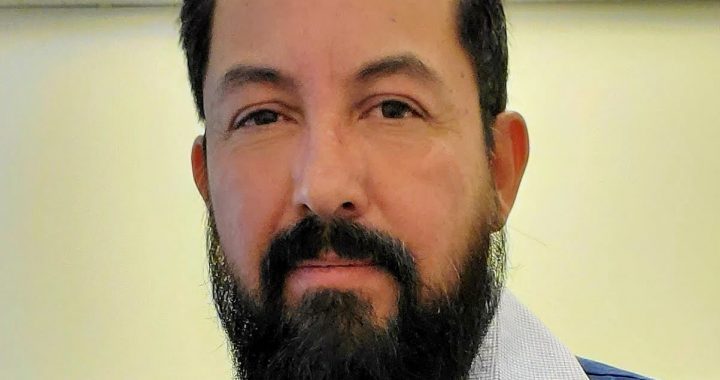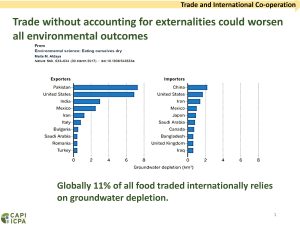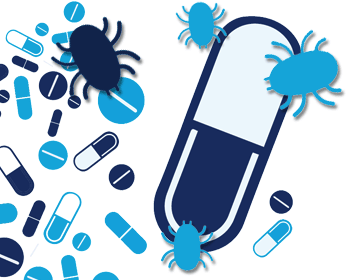As agriculture evolves into a high-tech business, automation and machinery do a lot of the heavy lifting, giving producers and employees the ability to “operate” data and robotics to improve profitability. That means changing the perception of farm work for incoming employees, and competing with other sectors who also want them for their technical skills.
On December 9, 2021, the Agri-food Innovation Council hosted a panel-based webinar on the need to attract talent and skilled labour in the agri-food sector. Gentec attended this webinar so you don’t have to. We summarize below the panelists’ comments on the key points. The panelists were:
- Martin Scanlon, Professor and Dean, Faculty of Agricultural and Food Sciences, University of Manitoba
- Ryan Riese, National Director, Agriculture, Royal Bank of Canada
- Jennifer Wright, Acting Executive Director, Operations, Programs and Partnerships, Canadian Agricultural Human Resources Council (CAHRC)
What key changes in innovation has the workforce brought to agriculture?
RIESE. Human ingenuity is responsible for innovation so it’s the workforce that drives innovation in the sector. When I ask clients, “What keeps you up at night?”, I get a lot about accessing labour. Not even advanced skills but appropriate skills. Sometimes, it’s just showing up reliably. So we need to drive curiosity, bring in the people who want to consider ag as a career, and the skills the industry requires. But those people need to be committed, have a good work ethic, be flexible. Ag is not a 9-to-5 job. Also they have to be ready to learn, listen and be taught.
SCANLON. Post-secondary education expects graduates to communicate clearly, think well and engage with each other professionally. They’ve been trained in crucial teamwork. Those industry needs won’t go away. But technology shapes how we deliver programs because it’s pervasive. If we look at Olds College, it has a 2-year program, Techgronomy. At UManitoba, we are taking a new approach so we don’t compete. All grads, regardless of discipline, should appreciate technology, what it can and can’t do. So all programs and courses have technology embedded in them. We partner with tech companies so that grads understand how to implement tech at the farm or other level.
WRIGHT. CAHRC does a lot of labour market research focusing on the workforce of today and in the future. Producers are experiencing labour shortages now. Our forecast says the shortage will double in next 10 years. Looking at ways to increase efficiencies and be more productive will help. That said, we also see that tech is adopted quickly but not changing the number of people required. Instead, it’s impacting the skills required. So where computer skills might have been necessary for entry-level jobs, now it’s for all jobs. We’re also hearing from producers that soft skills, teamwork, etc. are becoming more important because they are hiring people who didn’t grow up on farms. They need to teach the technology but without core background skills they won’t be successful at teaching the hands-on skills. So there’s a balance between soft skills and how they affect all elements of the workforce.
How well do you think public perception of working in ag aligns with reality? There’s the idyllic image of a barn with a red door and a calf peering through, munching hay. That’s changed but the public is not realizing the opportunities ag can offer.
SCANLON. We’re not doing a good job of reaching out to urban youth, and showing them the broad array of careers in ag. There’s an image issue that we have to work with at the school level. Students have to be interested in science and then see where they can do computer programming, agrology, etc. We started a program to steer undecided science grads towards food processing and agronomy. With the Faculty of Science ,we’re offering 4-6 courses that these grads can take to get insight on what an ag or food processing career is. It’s the kind of leg-up that gets them in the door for an interview. They can say: “I have gaps but here’s my science. With additional training, I’ll be useful employee”.
WRIGHT. I have first-hand experience of this. My 15-year old son wants to farm. We live in downtown Ottawa. When he shares his desires with teachers, the feedback is that he’s taking the easy way out, wanting to be a lazy farmer. I’ve had a chance to talk to those teachers but that’s not a one off. So we have a lot of work to do reaching out to urban schools, elementary and secondary, and then build on drawing undecided science grads into ag. We’ve just started two initiatives for students. One is developing business cases that require ag and non-ag students to work together, which helps build awareness of how an IT degree can be used, for example. In many cases, they’re not aware because of incorrect or old perceptions of the industry. And we’re running a wage subsidy program to connect non-ag students to ag.
RIESE. People get farther from the farm with each generation so the more opportunities they have to understand, the better. Perceptions are mostly incorrect. Industry needs to keep promoting and encouraging people to join the sector who did not grow up on the farm, and not make it a prerequisite.
Also, I want to point out that working in ag doesn’t necessarily mean you’re starting a farm or becoming an owner/operator. Those barriers are very high. That’s another conversation. But there are lots of support roles on farms as farms get bigger and more complex. They require subject matter expertise on different areas of the business. So there are lots of opportunities to join the sector without being an actual producer. We have to highlight that, too.
We see researchers going into various fields but not ag R&D. They want to build the next spaceship, but not the next farm robot. Is this an image we want to continue promoting?
SCANLON. Once people get engaged, whether they have the background or not, they are powerful advocates. We need to keep getting the message across. NASA and the Canadian Space Agency have this program: what equipment do we need for the mission to Mars? They brought in the best engineers, scientists and innovators, then added ag and food. There’s nothing old hat about ag. It’s the bedrock of society so we have to attract talent to keep it going.
RIESE. Research is the starting point but it takes many years to come to life. How great is it to wake up knowing you’re going to feed society? It’s a great story to be told. You don’t have to work for Amazon, Google, etc. There’s an incredible opportunity in ag for those looking to embark in the tech world.
WRIGHT. A lot of the tech being implemented on farms comes from outside Canada, so too does the technical help. Canadians can fill that gap.
Agri-food activities are conducted outside urban areas but that’s not where people live. How do we engage people to move to rural areas?
WRIGHT. I’m hearing that there’s more movement out of urban centres but it’s not translating into an increase in the labour pool because people are working remotely. They’re not connecting with the local labour force but they are increasing the need for services. So communities can ensure support for newcomers in terms of housing and services.
RIESE. We need government policy that helps bring the right people in. I hope immigration policy and ag policy are working together to kickstart the process. A lot of towns need people to work in ag.
SCANLON. It certainly is an issue. For example, Portage is an hour west of Winnipeg. It has 13,000 residents. Local companies run four buses a day from Winnipeg to ensure they have people with the right skills to ensure the continuity of their operations. Those issues aren’t going away. Then there’s the issue of bringing broadband to rural communities.
Automation could address labour shortages but how can you reduce labour without reducing productivity?
RIESE. Any time animal husbandry is involved, we still need physical beings to look after them. We have an obligation to the animals to ensure they are well looked-after, so we need people in that regard. Automatic feeders will help reduce that physical labour but we also need people to break down data and learning. So the roles will be different. That’s the message we want to carry.
SCANLON. Every sector is looking for people… health, IT, transportation. Are we not facing an endemic issue that won’t be solved with an ad campaign? Should we plan for ag with less people involved?
RIESE. That could be Plan B. Our goal is to attract people. If we can’t find people, it will hurt our sector or not allow us to capture opportunities. That’s unfortunate as a country. We need policy and promotion from all levels of government. Not many places in the world are better than Canada to meet the growing demand for food and protein.
SCANLON. The Barton Report identified ag as a key sector of the Canadian economy that could drive growth. That’s because we have unique endowed benefits of land mass, water, environment and climate. It would be criminal if we don’t get the talent to maximize these opportunities!
Read more about the shortage of labour in agriculture:









